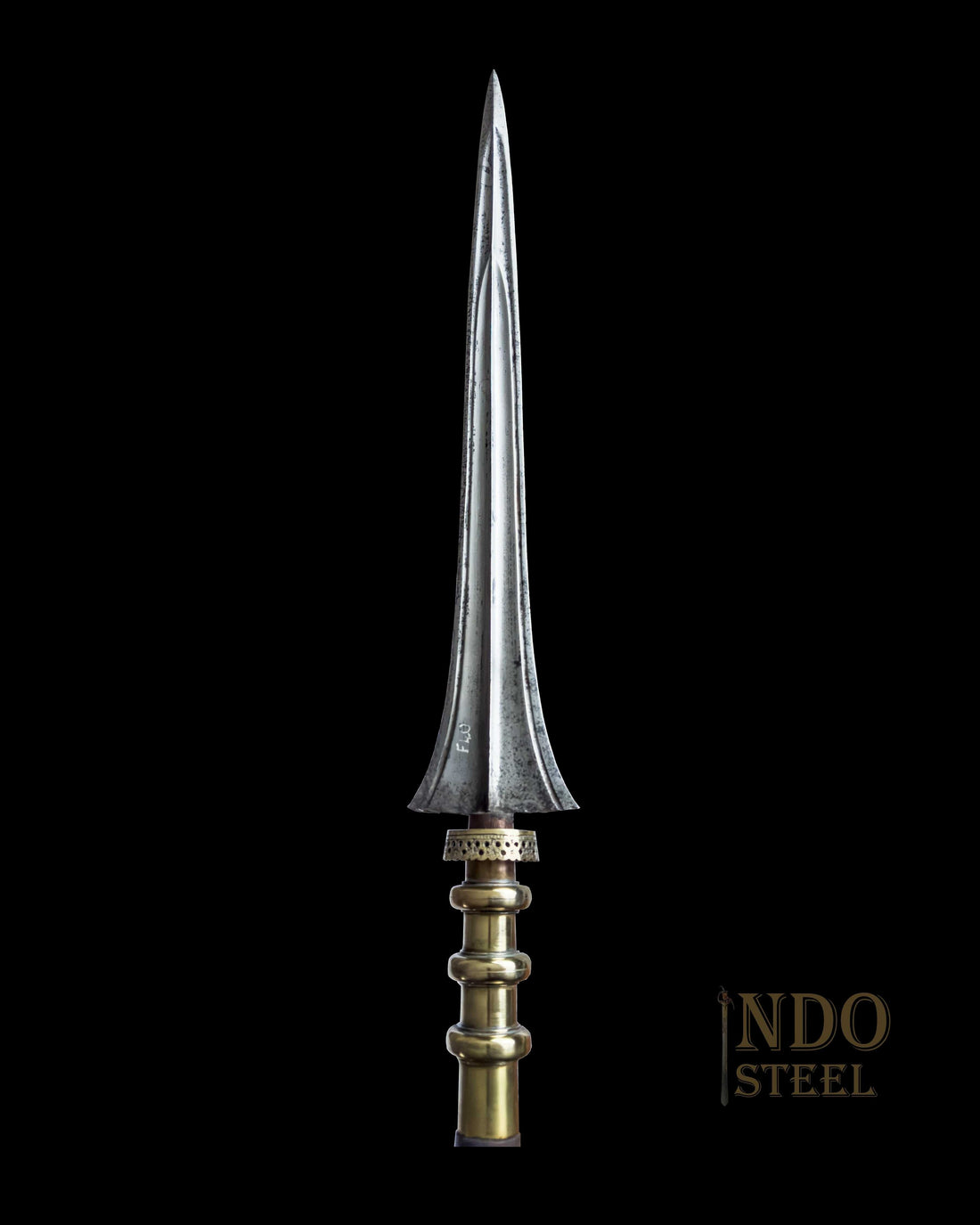
The Karpa Barsha




The Karpa Barsha. In 1673, when Guru Sahib Ji was engaged to Mata Jito Ji, Guru Ji’s father-in-law wanted the marriage party to go to Lahore. However, instead of going to Lahore, Guru Ji established a new township near Anandpur Sahib and named it Guru Ka Lahore. When the residents complained of a water shortage, Guru Ji struck the ground with this Barsha, and water came gushing out.
Guru Ji’s Barche (Nagni & Karpa) later served many other prominent Sikhs during his rule; probably the most notable users of these Vels were sons of Mani Singh, Bhai Bachittar Singh & Bhai Uday Singh. Bhai Bachittar Singh was famously given the Nagni Barsha and was sent on his way to despatch of the intoxicated war elephant sent in by the Hill Chieftains on the siege of Anandpur Sahib. Following the elephant was Raja Kesari Chand Jaswaria, with his soldiers behind him. Bhai Bachittar Singh rode at full speed and made quick work of the elephant, injuring it in the one place it wasn’t armoured, which then turned and ran backwards and, in the process, injured many Rajas. Seeing this, Bhai Uday Singh hit his horse with his feet and instantly moved forward and came face to face with Kesari Chand. He shouted, ‘’ਕੇਸਰੀ ਇੱਥੇ ਆ ਕੇ ਮੈਨੂੰ ਮਾਰੋ’’ ~ (Kesri, come here and kill me). Raja Kesari Chand swung, but his action went astray. Uday Singh reciprocated and thus cut off Kesari Chand’s head, which he then raised on the Kirpa Barsha. (1)
Coming in at a total of 8’8ft (265 cm), this Barsha (vel) features a broad, straight tapering head with a pronounced medial ridge and a reinforced sharp point. It flares at the base to a pair of sharp lugs and is connected to a tubular brass socket with three raised plain mouldings and a pierced top moulding with an engraved brim with flowers
1- Bindra, Pritpal Singh. Guru Kian Sakhian Tales of the Sikh Gurus. pp. 142–148.
